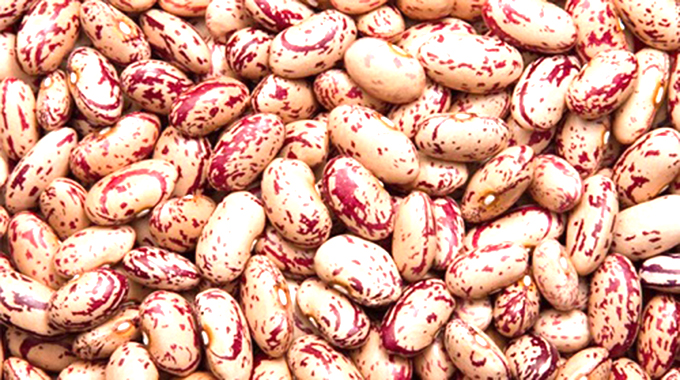
Wendy Madzura Correspondent
Climate change vagaries have prompted the need for farmers to adopt climate smart crops that help mitigate the effects of climate change.
The false start to the season, recurrence of mid-season droughts, heat waves, floods and the premature termination of the rainfall season over the years has seen the need for farmers to diversify cropping programmes to spread risk and increase chances of increased productivity in their cropping programmes.
Diversification promotes farm viability through improving income streams and liquidity.
The recent rainfall activity recorded across the country brought a sigh of relief to farmers.
The rains have enabled farmers to consider growing lucrative crops like sugar beans.
Sugar beans is one of the crops that is well within its planting season seeing as it can be established from January to mid-February depending on the predicted rainfall forecast of a region.
Farmers who intend to establish rain-fed crops should constantly refer to seasonal forecasts to enable them to make informed decisions.
Sugar beans is a crop of economic importance with a potential Return On Investment (ROI) of two to three dollars for every dollar invested.
This makes sugar beans a lucrative cropping venture to consider.
Sugar beans is a crop with a wide market range, making it profitable to grow for commercial use, provided the yield levels are optimised.
In addition to this, sugar beans, like most legumes, is a rich source of protein.
This is an important attribute given the growing percentage of health conscious consumers.
It is also a crop of significant importance in the drive towards sustainable agriculture, because of its nitrogen-fixing ability which enhances soil fertility.
It is important for farmers to incorporate crop residue after harvesting or to use it as ground cover (mulch) to align with one of the key principles of conservation agriculture of having (30 percent) ground cover.
Sugar beans variety selection as is the case in any profitable cropping venture should be guided by market research, expected yield levels, disease tolerance and growth habit in relation to season length to ensure productivity is optimised.
Farmers are encouraged to grow certified seeds from reputable suppliers.
Variety preferences include speckled beans like SC Bounty and SC Sharp varieties with a good disease tolerance package and a yield potential of 1,5 – 2,5t per ha under good management.
Profitable sugar beans production hinges on the ability to couple seed selection and Good Agronomic Practices (GAP’S). It is important for farmers to observe planting dates so that critical growth stages such as flowering and grain filling do not occur during periods of moisture stress or frost.
This is because sugar beans thrives in warm climates with an optimal temperature range of 18-24 degree Celsius. For rain-fed crops, the ideal amount of rainfall is in the ranges of (450mm to 650mm).
Sugar beans grows best in well drained sandy loam or clay loam soils.
This promotes good seed to soil contact which is key in the achievement of the desired crop stand and plant population. Soil pH level affects crop growth in most cropping programmes.
In sugar beans production, the ideal pH level is in the range of 5,5 – 6.5 (Calcium chloride scale). It is important to promote good drainage of excess water in the field as water logging conditions tend to affect germination and effective crop growth.
It is recommended for farmers to apply basal fertilisers when planting sugar beans.
They must, however, be guided by soil analysis and previous cropping programmes. Sugar beans, being a leguminous crop, fixes nitrogen in the presence of nitrogen fixing bacteria.
This process can be amplified by the application of an inoculant bacteria (rhizobium). It is imperative to note that rhizobium meant for soya beans is not interchangeable with that of sugar beans.
As a living organism, rhizobium is sensitive to a number of conditions, including direct exposure to fertiliser, heat and large quantities of water.
Rhizobium should be kept in a cool environment, and direct contact with fertiliser at planting should be avoided. It should be applied using about one litre of water (with 50g of sugar) per hectare.
When applied well, rhizobium reduces the need for top dressing (ammonium nitrate) with a resultant reduction in production cost and consequent increase in profit margins.
If the crop appears pale there might be need to apply ammonium nitrate as it may be a failure of rhizobium to fix nitrogen.
It is encouraged for the farmer to contact agronomists as this pallor may be from other causes rather than just the lack of nitrogen.
Effective pest control can be achieved if regular scouting is religiously followed so that insect pests are controlled before they reach optimum threshold levels.
In sugar bean production, the bean stem maggot is a pest of economic importance, especially in the first month of production, and as such farmers should adequately prepare for it.
The adult bean stem maggot moth (fly) lays its eggs inside the stem.
When the eggs hatch, the larvae start feeding on assimilates generated by the plant and block the vessels, hence cutting water and nutrient supply leading to wilting and eventually death of the plant.
Farmers should spray recommended insecticides at least four times in the first month of crop emergence for effective control of bean stem maggot.
Other pests such as cutworms, aphids, boll worms and leaf hoppers must be controlled before they reach economic threshold levels that can cause significant yield losses.
Having received significant rains across the country, farmers should establish their sugar bean crop as soon as possible to reduce chances of crop failure.
Crop diversification plays a pivotal role in climate smart mitigation initiatives. Remember farming is a potentially lucrative business that requires good genetics and strict adherence to Good Agronomic Practices (GAP’s).
Wendy Madzura is head of agronomy at Seed Co.
